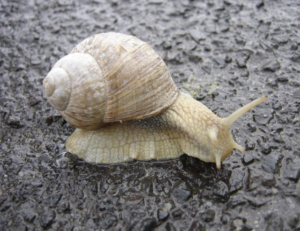Inspired by the slow and small snail, scientists have developed a prototype robot that could one day collect microplastics from the surface of oceans, seas and lakes.
The design of the robot is based on the Hawaiian apple snail, a common aquarium snail that uses the undulating motion of its leg to control the flow of the water surface and suck up suspended food particles.
Tiny plastic particles can become embedded in the tissues of marine animals, thereby entering the food chain, where they become a health problem and can be carcinogenic to humans. Currently, plastic collection devices mostly rely on trawl nets or conveyor belts to collect larger waste and remove it from the water, but lack the technology to screen out microplastics.
“We were inspired by how a snail collects food particles, and based on that, we created a device that could collect microplastics in the ocean or on the surface of a body of water,” said Sunghwan Jung, professor of biological and environmental engineering at Cornell University.
The researchers used a 3D printer to make a flexible carpet-like sheet capable of undulating. The spiral structure on the underside of the leaf rotates like a corkscrew, causing the carpet to undulate and create a wave that travels on the surface of the water.
A prototype made from an existing design should be scaled up to be practical in a real environment.
Source: Science Daily

